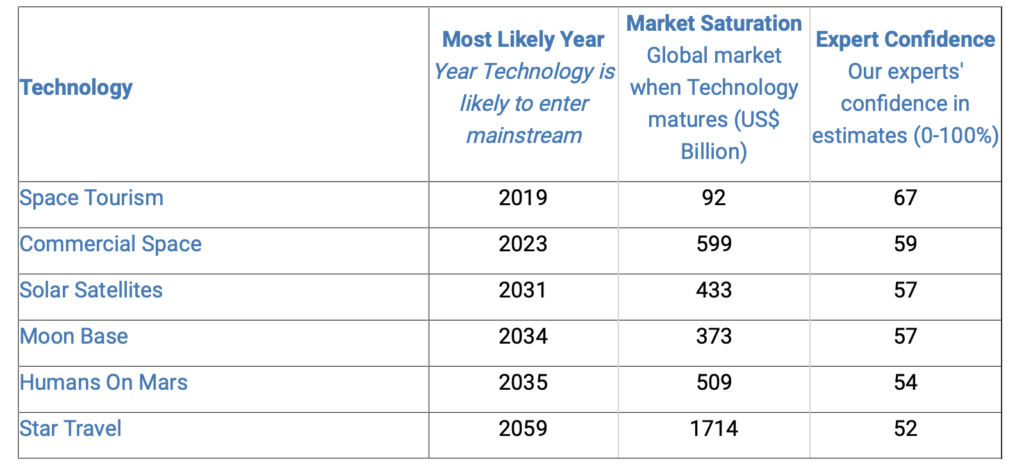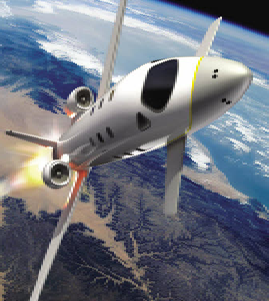The commercialization of space has come into focus as a fact of life recently. Just a few years ago, space commercialization was limited to satellite production, launch, and maintenance. Since 2010 when the US signed the National Space Policy, there has been increasing support of commercial space, and this was boosted in 2013 with the National Space Transportation Policy. To create a true space era, however, two major breakthroughs are needed — big advances in space technology and lower costs.

TechCast covers the six forecasts below on space. These forecasts suggest we should see dramatic gains during the next decade as space tourism and commercialization take off.
In the computer industry, and particularly in microchips and miniaturization, Moore’s law has been dramatically lowering the production costs of advancements in “silicone” based technology. A similar trend is underway in space commercialization. A first step in this direction was taken when NASA opened the space race to visionary entrepreneurs. The “Silicon Era” dominated the past 70 years. In space, the same trend is happening with major investments in scores of companies like Space X, Virgin Galactic, Orbital Sciences, and Boeing.
For example, the Space Angels Network has funded 23 companies pioneered by entrepreneurs in space technology, from manufacturing satellites to manufacturing better engines for space launches. Mars-One, the controversial enterprise committed to sending people on a one way trip to Mars, is funding its mission through a combination of reality show and crowd-funding. Other companies are planning trips to the Moon, building private space stations, and mining asteroids.
I can’t help but draw parallels and wonder — can the new technological innovations co-evolve to bring space commercialization closer to reality?
————————————————–
Anamaria Berea, PhD, is on the faculty at the Smith School of Business, U. Maryland and a TechCast Expert.




